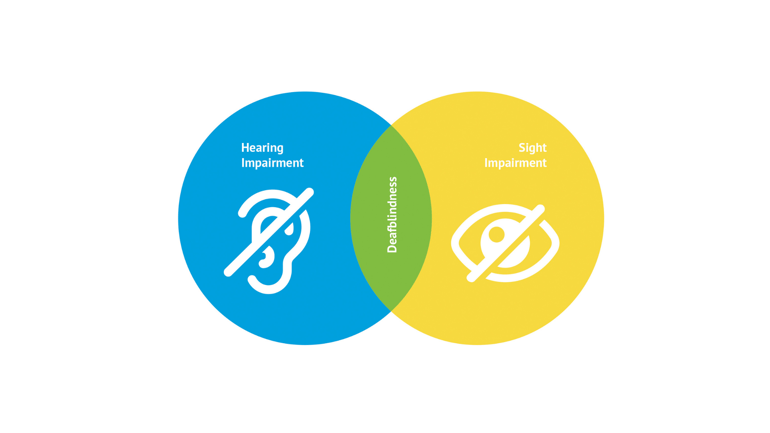Naomi Dainty works for Deafblind UK. In this blog she explains what it means to be deafblind, how to spot some of the early signs someone you know might be deafblind, and how to access support and information. 
Naomi writes:
A lady once came up to our stand at a low vision event. She had sight impairments and was wearing two hearing aids, indicating to that she was hard of hearing.
She saw that we were representing Deafblind UK and said to me “wouldn’t it be awful to be deafblind, those poor people!” What she didn’t realise was that she herself was actually one of nearly 400,000 deafblind people in the UK.
What is deafblindness?
Despite common misconceptions, deafblindness actually means a combined sight and hearing impairment to the point where someone’s communication, mobility and ability to access information are impacted.
Deafblindness comes on a huge spectrum ranging from someone struggling to see and hear the TV right through to them not being able to see or hear anything at all. However, many people with deafblindness are able to hear and/or see something.
Many people don’t identify themselves as being ‘deafblind’ but are aware that they “can’t see and hear as well as they used to”. It is important for us all to recognise the signs of sight and hearing impairments in ourselves and in our friends and family - and to understand that support is available if we need it.
What is Dual Sensory Loss?
Dual sensory loss is a completely different condition to a sight loss plus a hearing loss. An easy way to think of this is to imagine hearing impairment as the colour blue and visual impairment as the colour yellow. When the two sensory impairments - in this case the colours blue and yellow - come together, they become something new: Dual Sensory Impairment - in this analogy, the colour green, a totally new colour with different properties.
Early signs of deafblindness include:
- Difficulty following conversations involving more than two people
- Thinking that other people sound muffled or like they're mumbling
- Having trouble hearing children and women
- Feeling embarrassed to meet new people or avoiding social situations
- Leaving post unopened
- Persistently cleaning glasses, or difficulty seeing well with them
- Hesitancy in sunlight, bright light, or low light at night
What to do if you think you have a dual sensory impairment
Realising that you may have a dual sensory impairment can leave you with questions and concerns. At Deafblind UK, we support people with any level of combined sight and hearing loss to carry on as normal.
Sometimes this means advising people about a new household tricks and tips to make their life easier. Things such as using daylight bulbs, bump-on stickers or other basic equipment. Or it might mean we show you how to use accessibility features on a computer or tablet, so you can do your shopping online.
Many services are free of charge and include practical advice and information, emotional support for you and your family, help with digital technology, use of our accessible holiday caravans, social groups and companionship.
If you have any questions about combined sight and hearing loss or to find out what we can do for you, contact the Deafblind UK team.



Let Us Know What You Thought about this Post.
Write your comment below.